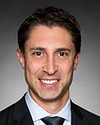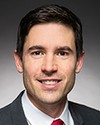Thank you very much, Chair.
I’ve worked with multinationals my entire career. It’s clear to me that their primary objective is to maximize shareholders’ assets and generate ever-increasing profits. There’s no hiding from it, it’s part of their constitution, their mandate and their board of directors’ mandate.
In that sense, we must also understand that it’s not necessarily profitable for an oil, gas or mining company to prevent the release of chemicals, prevent spills, protect flora and fauna, or even to remediate post-mining land degradation, reduce pollution, manage solid and liquid waste or prevent environmental contamination.
I say this because it’s important to understand that those roles fall to governments and regulators. There’s no hiding from that either. It’s a partnership, and it’s important to understand that. It’s your role to protect Canadians and their environment. There’s nothing to be embarrassed about.
Mr. Pushor, let me tell you what worries me. In October, professors at the University of Calgary called for a public review of Alberta’s energy regulator, because they described it as too secretive and too close to industry. That worries me.
I would like you to explain how you intend to evolve in order to fully assume your role, your independence and your duty of transparency, and to assert yourself in this very important mission of protecting Canadians and their environment.





